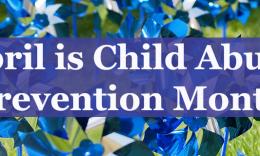How To Implement a Successful Family Survey

Families’ opinions matter, and as their wants and needs change, it’s important for performance and growth to know. An annual family survey is a great way to gather strategic information, identify changes in expectations, connect with families, learn what is and isn’t working for the day-to-day processes, and identify areas of improvement in child safety.
Leverage Technology
The key to a successful survey lies in leveraging technology and allowing families to complete the information when and where it’s most convenient. Families use technology as a support tool to help make their lives easier, so a survey must be customizable, easily accessible, and at an appropriate length. PBS states that, on average, parents of children ages 8 to 18 spend more than 9 hours each day consuming screen media, which makes an online survey a good option.
Format
For a higher response rate, keep the survey short, no more than 5 minutes, and include a section for kids and youth to share their feedback on safety. Choose a format that best works for you. A common one is a sliding scale, 1-5, with one being the least and five being the highest. The sliding scale allows respondents to indicate their choices more precisely, capture a broader range of answers, and require less time.
What to Ask
Families don’t want to spend hours responding, so it’s best not to ask questions in-depth. Questions about child safety should be used to open lines of communication, establish needed action steps, and confirm that the guidelines in your child protection policy are being followed.
Those that pertain to process improvement should cover areas such as checking in and out, health and wellness guidelines, attendance issues, event registration, and volunteer opportunities.
For communication questions, remember that every family prefers how they like to be contacted, whether through text, email, check-in notifications, or the website. So, survey questions should be phrased to help fine-tune messaging, making it clearer, more consistent, and easier for families to respond.
Here are some topics to consider:
- Child Safety
- Check-In and Check-Out
- Communication
- Staff and Volunteer Performance
- Volunteer Opportunities
- The Welcome Area
- Bathrooms and Hallways Policy
- Outside or Play Area
- Classroom ratios
- Events and Programs
At the end of the survey, you can include an area for open-ended questions where you’re asking families why they gave the ratings they did. Written comments help contextualize the ratings and allow families to share positive and negative explanations.
Here are five suggestions for open-ended questions.
- What do you consider our greatest strength?
- Please share where we can improve.
- What do you consider our most significant challenge or area of opportunity for improvement?
- How can staff, leaders, and volunteers serve your family better?
- Would you like us to contact you directly to discuss the answers you have provided in more detail?
Safety Questions for Children
Children and youth are excellent sources of safety information. One of the best ways to learn about their experiences is to ask for their feedback. Including a section for them to share their thoughts will promote open communication, transparency, and trust and help them feel they are a part of improving safety.
The child and youth part of the survey is parent-directed if needed. It contains questions parents can read to younger children to capture their feedback or allow those who can independently read and write to answer. Older children may request privacy in filling it out and prefer to submit it independently. Whatever the case, it’s a helpful tool for discussing personal space and body safety with children.
These sample questions are for children under 12 and ask about their attendance at a daily or weekly program, one-time event, or offsite gathering. Additional questions for youth can be derived from these questions and focus more on youth leadership, mentoring programs, and offsite activities.
- Do you feel safe attending our program, event, or gathering? If not, please explain why.
- Do you feel your teachers, aides, and volunteers work well to protect you? Yes or no? Why or why not?
- Do you ever feel left out of classroom activities? Yes or no? If yes, please share more details.
- In our program, have you ever been teased or bullied? If yes, please share specifics.
- Have you ever felt unsafe or afraid of being hurt? If yes, please provide details.
- Are there any places in the building that you feel unsafe?
- Is there anything we can do or provide to make you feel safer?
Lastly, leave space for parents to provide comments and feedback. Make it optional for them to share their names and ensure that their answers are anonymous.
Allow Families to Be Heard
By implementing an annual family survey, you are giving families a chance to be heard. Their input goes a long way in building trust, promoting positive word of mouth, and giving families peace of mind about where their kids spend time.
Click here to learn more about the benefits of using secure children’s and youth check-in to help manage your children’s area, keep families smiling, and improve safety. You can also subscribe to the KidCheck blog or connect with us on YouTube, X, Facebook, Pinterest, and Instagram.
Sources:
https://www.pbs.org/newshour/health/much-time-parents-spend-screens
Photo by Paul Hanaoka on Unsplash


